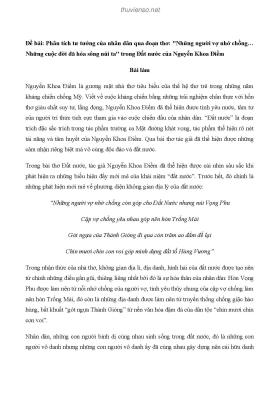Thông tin tài liệu:
Primary Bacterial Peritonitis: TreatmentTreatment for PBP is directed at the isolate from blood or peritoneal fluid. Grams staining of peritoneal fluid often gives negative results in PBP. Therefore, until culture results become available, therapy should cover gram-negative aerobic bacilli and gram-positive cocci. Third-generation cephalosporins such as cefotaxime (2 g q8h, administered IV) provide reasonable initial coverage in moderately ill patients. Broad-spectrum antibiotics, such as penicillin/β-lactamase inhibitor combinations (e.g., piperacillin/tazobactam, 3.375 g q6h IV for adults with normal renal function) or ceftriaxone (2 g q24h IV), are also options. Empirical coverage for anaerobes is not necessary. After the infecting organism...
Nội dung trích xuất từ tài liệu:
Chapter 121. Intraabdominal Infections and Abscesses (Part 3) Chapter 121. Intraabdominal Infections and Abscesses (Part 3) Primary Bacterial Peritonitis: Treatment Treatment for PBP is directed at the isolate from blood or peritoneal fluid.Grams staining of peritoneal fluid often gives negative results in PBP. Therefore,until culture results become available, therapy should cover gram-negative aerobicbacilli and gram-positive cocci. Third-generation cephalosporins such ascefotaxime (2 g q8h, administered IV) provide reasonable initial coverage inmoderately ill patients. Broad-spectrum antibiotics, such as penicillin/β-lactamaseinhibitor combinations (e.g., piperacillin/tazobactam, 3.375 g q6h IV for adultswith normal renal function) or ceftriaxone (2 g q24h IV), are also options.Empirical coverage for anaerobes is not necessary. After the infecting organism isidentified, therapy should be narrowed to target the specific pathogen. Patientswith PBP usually respond within 72 h to appropriate antibiotic therapy.Antimicrobial therapy can be administered for as little as 5 days if rapidimprovement occurs and blood cultures are negative, but a course of up to 2 weeksmay be required for patients with bacteremia and for those whose improvement isslow. Persistence of WBCs in the ascitic fluid after therapy should prompt a searchfor additional diagnoses. Prevention PBP has a high rate of recurrence. Up to 70% of patients experience arecurrence within 1 year. Antibiotic prophylaxis reduces this rate to death in this setting is attributable to gram-negative bacillary sepsis and to potentendotoxins circulating in the bloodstream (Chap. 265). Gram-negative bacilli,particularly E. coli, are common bloodstream isolates, but Bacteroides fragilisbacteremia also occurs. The severity of abdominal pain and the clinical coursedepend on the inciting process. The organisms isolated from the peritoneum alsovary with the source of the initial process and the normal flora at that site.Secondary peritonitis can result primarily from chemical irritation and/or bacterialcontamination. For example, as long as the patient is not achlorhydric, a rupturedgastric ulcer will release low-pH gastric contents that will serve as a chemicalirritant. The normal flora of the stomach comprises the same organisms found inthe oropharynx (Chap. 157) but in lower numbers. Thus, the bacterial burden in aruptured ulcer is negligible compared with that in a ruptured appendix. The normalflora of the colon below the ligament of Treitz contains ~1011 anaerobicorganisms/g of feces but only 108 aerobes/g; therefore, anaerobic species accountfor 99.9% of the bacteria. Leakage of colonic contents (pH 7–8) does not causesignificant chemical peritonitis, but infection is intense because of the heavybacterial load. Depending on the inciting event, local symptoms may occur in secondaryperitonitis—for example, epigastric pain from a ruptured gastric ulcer. Inappendicitis (Chap. 294), the initial presenting symptoms are often vague, withperiumbilical discomfort and nausea followed in a number of hours by pain morelocalized to the right lower quadrant. Unusual locations of the appendix (includinga retrocecal position) can complicate this presentation further. Once infection hasspread to the peritoneal cavity, pain increases, particularly with infection involvingthe parietal peritoneum, which is innervated extensively. Patients usually liemotionless, often with knees drawn up to avoid stretching the nerve fibers of theperitoneal cavity. Coughing and sneezing, which increase pressure within theperitoneal cavity, are associated with sharp pain. There may or may not be painlocalized to the infected or diseased organ from which secondary peritonitis hasarisen. Patients with secondary peritonitis generally have abnormal findings onabdominal examination, with marked voluntary and involuntary guarding of theanterior abdominal musculature. Later findings include tenderness, especiallyrebound tenderness. In addition, there may be localized findings in the area of theinciting event. In general, patients are febrile, with marked leukocytosis and a leftshift of the WBCs to band forms. While recovery of organisms from peritoneal fluid is easier in secondarythan in primary peritonitis, a tap of the abdomen is rarely the procedure of choicein secondary peritonitis. An exception is in cases involving trauma, where thepossibility of a hemoperitoneum may need to be excluded early. Emergent studies(such as abdominal CT) to find the source of peritoneal contamination should beundertaken if the patient is hemodynamically stable; unstable patients may requiresurgical intervention without prior imaging.
